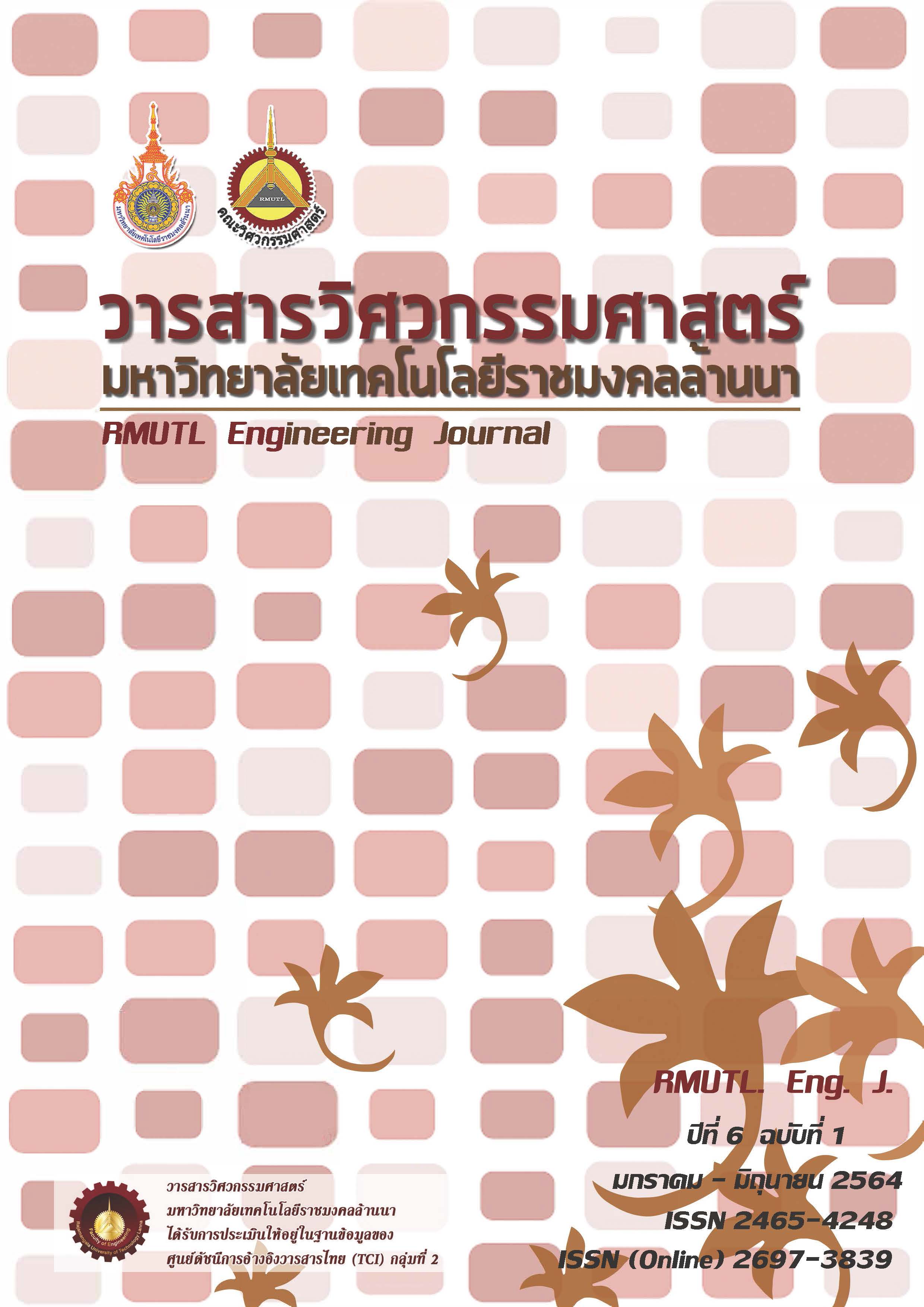The Design and Development of Lotus Leaves Forming Machine
DOI:
https://doi.org/10.14456/rmutlengj.2021.3Keywords:
Lotus Leaf, Compression Molding, BinderAbstract
The aim of this work is to develop a lotus leaves forming machine and study the suitable forming conditions. The machine has three important components including 1) the hydraulic control, 2) the mold set, and 3) a temperature-controlled heating. This machine is used to form containers at different temperatures, pressure levels, forming times and the number of layers of lotus leaves. The results show that the optimal condition of experimental design in the compression molding of a lotus leaf temperature is 150 degree Celsius at a pressure of 300 pound per square inch. Four layers of lotus leaves with 5 minutes compression are used. Then, the mechanical and physical properties of the products were studied in order to determine the best condition for production process. For the tensile testing, the tensile stress of container is 5.07 MPa with 1.11 percentage of elongation at break. The result of the thermal testing shows that containers are deformed after 1 minute. In addition, the percentage of absorption is 69.29.
References
[2] Pollution Control Department. 2019. Roadmap of Plastic waste management. Available online. http://infofile.pcd.go.th/waste/150825_1.pdf. [Accessed 14th August 2020].
[3] Bencha L, Chocharean N, Suma Y, Pasukphun N. Preliminary feasibility of using agricultural wasted in Chiang Rai province for “Green packaging” production. Proceeding of 12th Naresuan research; 2015. p. 418-419.
[4] Liwthaisong M. Production of biodegradable food packaging form banana sheath, Master thesis, Suranaree University of Technology; 2013.
[5] Tanman N. Development of biodegradable packaging from cassava stalk. Master thesis, Suranaree University of Technology; 2014.
[6] Phuwarowadom G, Praditdung S. The forming machine of cassava stalk. Project, Kasetsart University; 1997.
[7] Shogren RL, Tiefenbacher KF. Baked starch foams: starch modifications and additives improve process parameters. structure and properties. Indrustrial Crop and Products; 2002.
[8] Cinelli P, Chiellini E, Lawtom JW, Imam SH. Foamed articles based on potato starch, corn fibers and poly (vinyl alcohol). Polymer Degradation and Stability; 2005.
[9] Insurath J. Development of biodegradable packaging from palm oil fiber. Project, Suranaree University of Technology; 2014.
[10] Limboonrung T, Phun-apai N. Design and construction of a ware forming machine from water hyacinth. Proceeding of the 31st Mechanical Engineering Conference of Thailand; 2017 July 4-7; Mountain Ngam Resort Nakhon Nayok Province Which the Faculty of Engineering Srinakharinwirot University, Thailand; 2017. Thai.
[11] Sutthiyapiwat S, Phayoonpun T. Design and Development of Food Packaging Form Betel Husk to add Value for Strong Community and Economic Foundation. Princess of Naradhiwas University Journal. 2019;12(1) pp. 120-131. Thai
[ 12] ChaiKarm S, Juphakubup S, Boonyopas S. Development of property materials forming from Bamboo Sheath for produce Biodegradable Pot. 11th National & International Conference. Mach 27, 2020, Suan Sunandha Rajabhat University, Bangkok, Thailand
[13] Ampornpitak K, Thirasang S. The development of biodegradable food packaging form banana sheath. Project, Suranaree University of Technology; (2012).










